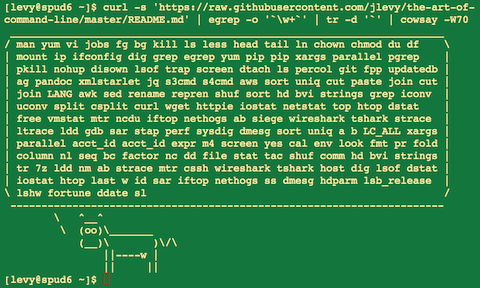- 29 Posts
- 7 Comments

 4·4 months ago
4·4 months agoA godsend for saving time - the
ab(abbreviation) command. This command lets you shorten a long sequence of characters (be it a text or a complex command) into another sequence of any length. It works in both insert mode and command mode. If you frequently edit text using a lengthy command, this feature will significantly save you time. For example::ab ul s/\<./\u&/gto capitalize every word in a line. When you enter command mode (type:) and typeul, vim will automatically expand it tos/\<./\u&/gfor you.Additionally, the
mapcommand can save even more time, but IMO theabcommand offers more control for handling various cases. In my example, you can useulto only capitalize the lines that have a specific pattern using the global commandg.Another overlooked aspect is the
.exrcfile. Enabling it withset exrcin your config allows for different setups based on different situations. For instance, when writing notes, I prefer to have line breaks on to make the text look nicer on the screen. In contrast, when writing code, I don’t require this option. I simply need to placeset linebreakin the.exrcfile in the note-writing directory to adjust accordingly.

 21·5 months ago
21·5 months agoThat’s what I like about FOSS. You see very few distractions that try to grab your attention. This leads to a rather quiet digital life.
To take it a step further, you could enable the Do Not Disturb feature on your devices and only grant notification permissions to essential apps. This way, you can enjoy some peace of mind.

 17·6 months ago
17·6 months agoMy lazy ass decided to just go with the copied title generated by Lemmy when making the post. I edited the title, thanks for mentioning that!

 11·6 months ago
11·6 months agoArchive link: Publishers Sue Google over Pirate Sites

 6·6 months ago
6·6 months agoFixed.
Edit: The new link of the post works but I think providing an archive link would be more sufficient.

 63·6 months ago
63·6 months agoThis kind of self-fulfilling prophecy is what will drive down even more support for Linux. The thing we need to do right now is to let more people try out Linux so that corporations will see Linux as a potential target on the desktop and make products for Linux, not the opposite like what you are saying.


















Instead of remembering what line number you were at, you can use marks (
:help mark-motions) to immediately jump back to where you left off.For example, type
mxto mark the current position withx(or anything you want). Say now you are at the top of the file, just type'xto go back to the line marked withx.